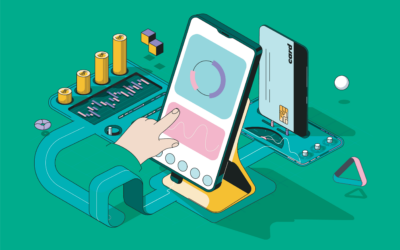IVR Revolutionizes Customer Service

IVR Revolutionizes Customer Service
In the fast-paced realm of customer support, efficiency and quick responses reign supreme. Interestingly, the rise of Interactive Voice Response (IVR) systems in call center technology marks a pivotal shift, steering customers towards the right department or self-service options via automated menus. This advancement not only streamlines processes but also slashes wait times significantly. Today, let’s dive into the core of IVR, its operational blueprint, and a compelling case study with Coca-Cola that showcases its game-changing impact.
Unraveling IVR: A Support Game-Changer
At its heart, Interactive Voice Response (IVR) stands as a sophisticated automated system integrated into call center software. It engages customers with pre-recorded messages and navigational menus, enabling them to pinpoint the exact service or department they need. Here’s a glimpse into how IVR breathes life into customer support:
- Warm Welcomes: Each journey begins with a friendly welcome message, laying the foundation for a positive customer experience.
- Navigational Menus: Through voice prompts, the system unfolds a variety of options. Consequently, customers make their choice using either their touch-tone keypad or voice commands.
- Efficient Routing: Based on the selection, calls are swiftly directed to the relevant department or service, ensuring customers connect with the right resource.
- Empowered Self-Service: Additionally, IVR also shines by offering self-service avenues for common tasks such as balance inquiries, payments, or order tracking, fostering customer independence.
- Human Touch Option: For those seeking or needing more intricate support, the system seamlessly transitions to a live agent.
Coca-Cola’s IVR Triumph
The beverage behemoth, Coca-Cola, embraced IVR to efficiently manage routine customer interactions, including order tracking, product queries, and FAQs.
The impact was profound:
- Accelerated Responses: Automation through IVR cut down response times dramatically, enhancing customer experiences.
- Boosted Efficiency: Furthermore, freeing agents from monotonous tasks enabled them to dedicate more time to complex concerns, elevating the level of personalized support.
- Surged Customer Contentment: The blend of rapid responses and heightened agent availability led to a spike in customer satisfaction, with many lauding the streamlined support process.
Elevating Support with IVR
Coca-Cola’s narrative is a testament to the transformative potential of IVR in customer support. By automating standard inquiries and tasks, businesses unlock numerous benefits:
- Minimized Hold Times: Customers are quickly navigated to the correct department or self-service feature, reducing wait periods.
- Elevated Efficiency: With routine tasks automated, agents can focus on intricate issues, delivering value-added support.
- Boosted Satisfaction: Moreover, faster responses paired with effective support elevate overall customer happiness.
- Consistent Quality: Lastly, IVR ensures uniformity in the support process, guaranteeing a standard quality of service for all customers.
In conclusion, “IVR Revolutionizes Customer Service” encapsulates how IVR stands out as an indispensable tool for enhancing customer support. By guiding customers to the right resources and automating standard tasks, companies can drastically cut wait times, amplify efficiency, and heighten customer satisfaction. As the demand for swift and effective customer support grows, IVR continues to be an essential component in the service strategy of any forward-thinking business. This transformative technology not only streamlines customer interactions but also sets a new standard for service excellence in today’s fast-paced world.
Reach out to us for expert advice on implementing IVR solutions that can transform your customer support landscape.
Categories
- Agent Performance & Training
- AI solutions
- Business Growth
- Call Center Performance & Productivity
- Call Center Software Platform
- Call Center Technology & AI Integration
- Call Center Training
- Call Center Workforce Management
- Call Monitoring
- Cloud-Based Solutions
- Customer Experience
- Data Security
- General
- Insights
- Integrated Customer Service
- News
- Omnichannel Communication Strategy
- Omnichannel Support
- Tech


